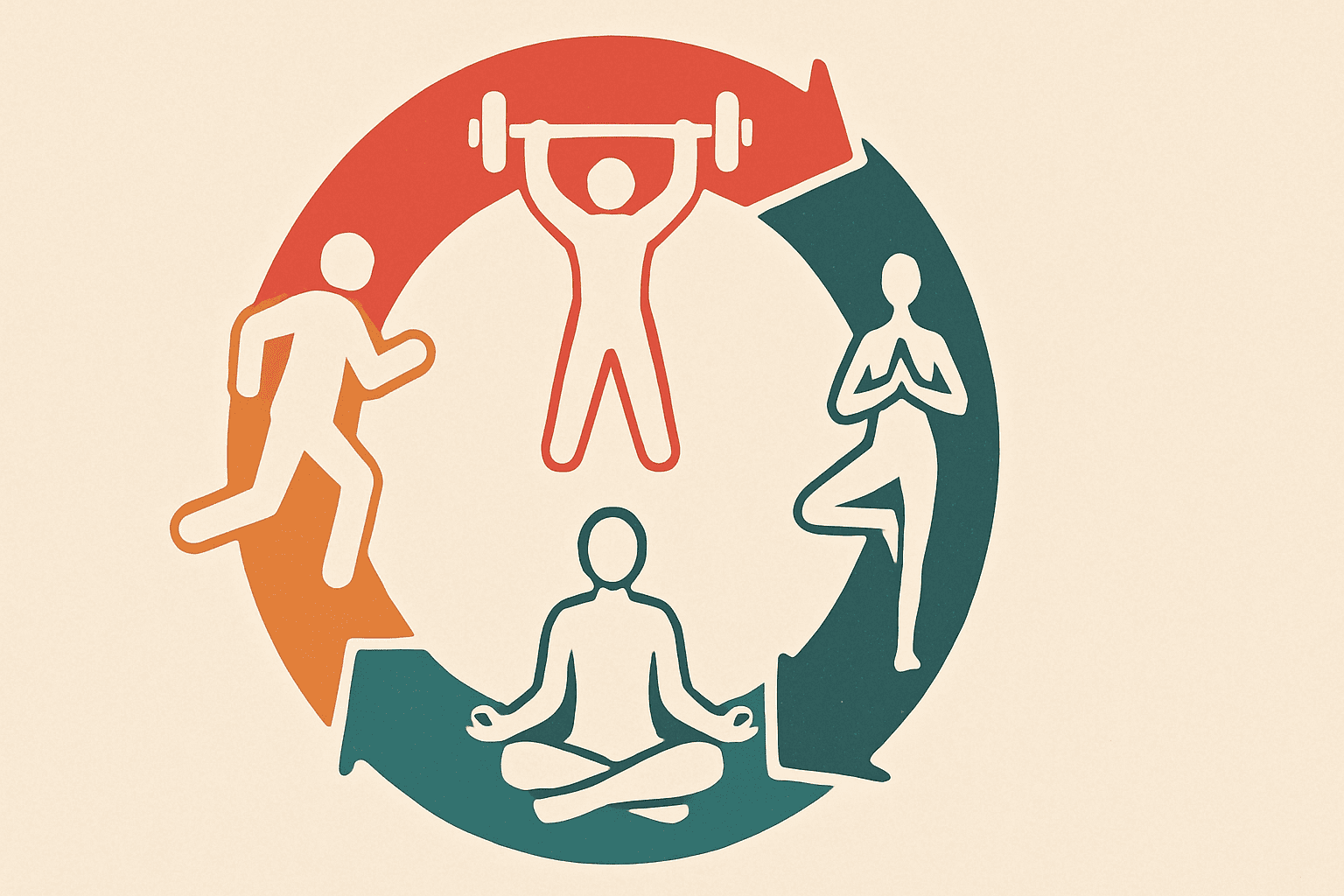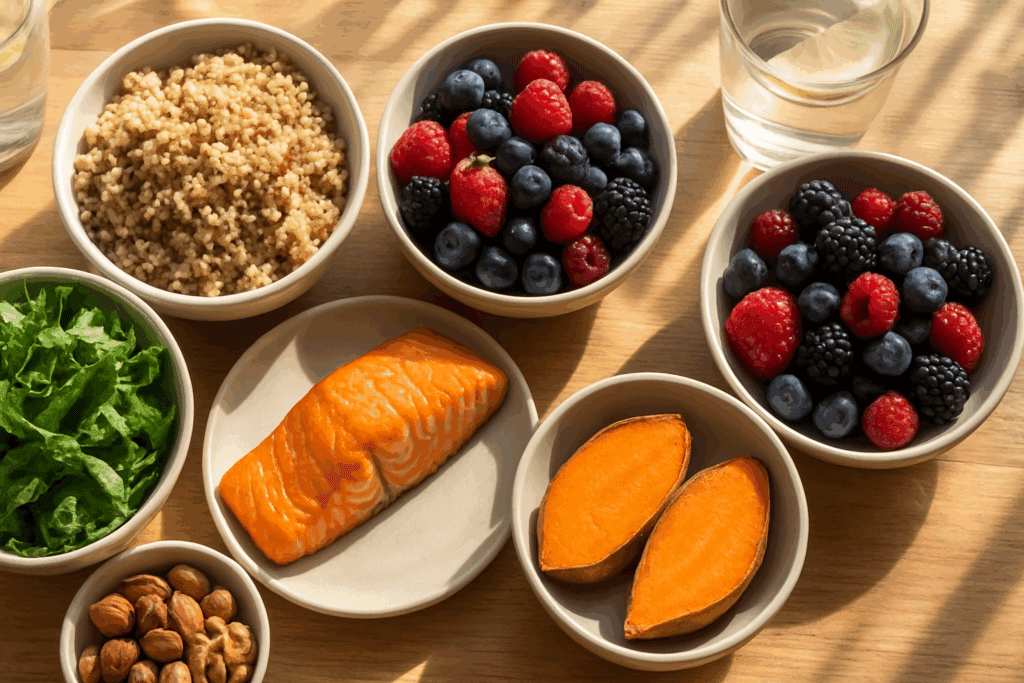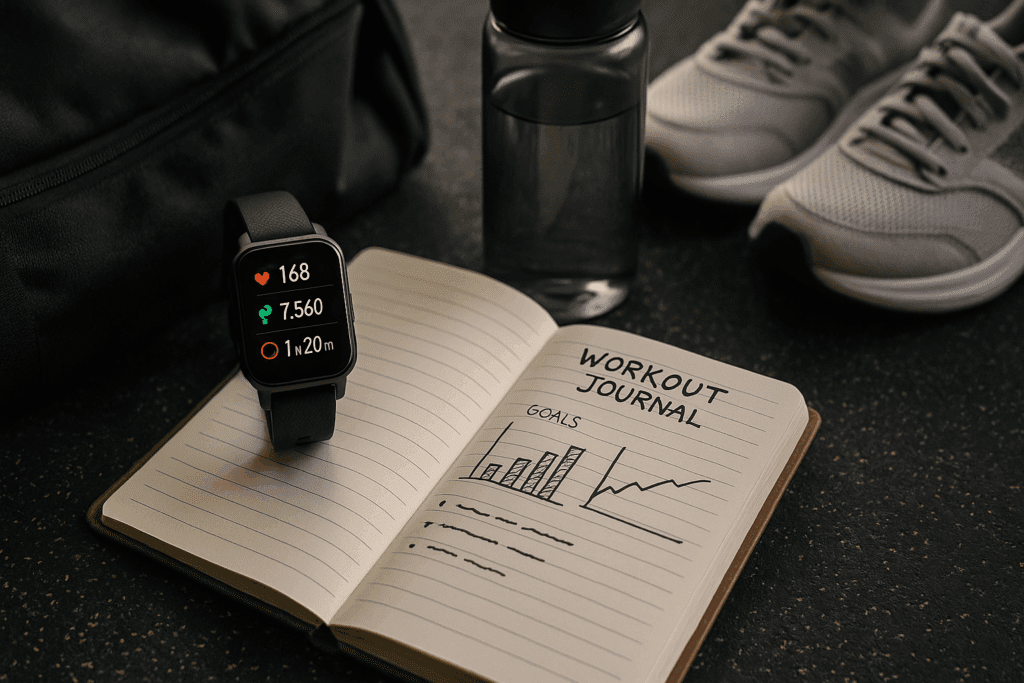Introduction: Embracing a Holistic Approach to Fitness and Endurance
In an era dominated by sedentary lifestyles and digital distractions, prioritizing personal fitness and endurance is more crucial than ever. Many individuals embark on a journey to elevate their health, only to find themselves unsure of where to begin or how to sustain progress. Understanding what is the best way to improve and maintain fitness requires more than a one-size-fits-all strategy. It demands a personalized, scientifically informed approach that respects the body’s natural rhythms and long-term needs. Whether you’re a seasoned athlete or a beginner, boosting your physical stamina and maintaining long-term health can be both achievable and enjoyable through natural, evidence-based methods.
The path to enhanced endurance and sustained energy isn’t about quick fixes or fad workouts. Instead, it lies in developing an integrated system of movement, recovery, nutrition, and mental discipline. This article explores expert-recommended strategies that help increase exercise capacity and improve overall fitness naturally, supporting long-lasting results without the burnout. From understanding the science behind cardiovascular and muscular endurance to practical guidance on exercise progression, nutrition, and recovery, we delve deep into what it truly takes to elevate your fitness sustainably.
You may also like: How to Increase Stamina and Endurance Naturally: Smart Training Tips and Nutrition Habits That Support Cardiovascular Fitness

The Foundations of Natural Fitness Improvement
Fitness is not merely about the ability to lift weights or run long distances; it is a comprehensive state of well-being that encompasses cardiovascular health, muscular strength, flexibility, and mental resilience. When we ask, how to improve fitness, we must consider each of these dimensions. A strong foundation begins with consistency and balance—developing a routine that includes a variety of movement types while aligning with individual capacity and goals.
Cardiovascular fitness, for example, plays a pivotal role in endurance. It reflects how efficiently your heart and lungs supply oxygen to your muscles during prolonged activity. The best way to improve and maintain fitness often begins with enhancing aerobic capacity through activities like brisk walking, cycling, swimming, and interval training. These methods support heart health, reduce fatigue, and gradually increase stamina without placing excessive strain on the body.
Equally vital is the development of muscular strength and flexibility. Resistance training using body weight or light weights not only builds muscle but also protects joints and enhances metabolic function. Meanwhile, flexibility through practices like yoga or dynamic stretching helps prevent injury and maintains range of motion. By blending these components into your weekly regimen, you create a resilient body primed for both short bursts of activity and sustained performance.

Progressive Overload: The Key to Sustainable Gains
One of the most reliable principles in exercise science is progressive overload—the gradual increase of stress placed on the body during training. When applied correctly, it answers the question of how to improve fitness without risking injury or overtraining. The body adapts to the demands placed upon it, meaning that repeated exposure to a slightly higher workload leads to improved strength, endurance, and efficiency.
To utilize this principle effectively, begin by establishing a baseline of your current fitness level. Track your endurance with timed runs, monitor your strength with bodyweight exercises, and note your recovery time. Once this benchmark is clear, make incremental increases. For instance, add five more minutes to your jog, perform two additional push-ups, or reduce rest time between sets. These subtle adjustments stimulate adaptation while allowing your body to recover and grow.
Importantly, the concept of “more isn’t always better” must be embraced. True progress comes from balancing effort with recovery. Overloading too quickly or without proper technique can lead to fatigue, muscle strain, or even chronic injury. Incorporating rest days and sleep hygiene into your routine is essential for allowing tissues to repair, hormones to regulate, and energy levels to rebound—all of which contribute significantly when trying to increase exercise performance.

Nutrition for Endurance: Fueling the Natural Way
Nutrition plays a central role in fitness, serving as the fuel for both performance and recovery. To naturally boost endurance and maintain optimal health, a nutrient-dense diet is paramount. Rather than focusing on calorie counting alone, prioritize the quality of your food sources. Whole grains, lean proteins, healthy fats, and a vibrant variety of fruits and vegetables provide the macro and micronutrients necessary for sustained energy and muscular repair.
Carbohydrates are the body’s primary energy source during prolonged activity. Including complex carbs such as oats, quinoa, brown rice, and sweet potatoes helps maintain glycogen stores, which are critical for endurance performance. Protein is equally essential for muscle recovery, particularly post-exercise. Consuming high-quality protein from sources like legumes, eggs, poultry, or plant-based powders supports muscle repair and growth.
Hydration is often overlooked but deeply influential. Dehydration can impair physical performance, decrease mental clarity, and increase the risk of injury. Aim to drink water consistently throughout the day and increase intake around exercise sessions. Adding electrolyte-rich fluids or naturally hydrating foods like cucumbers, oranges, and watermelon can further enhance hydration.
Natural supplements such as beetroot juice, tart cherry juice, or adaptogenic herbs like ashwagandha have shown promise in supporting endurance by enhancing oxygen utilization, reducing inflammation, and improving stress resilience. However, any supplementation should be guided by medical or nutritional professionals to ensure safety and efficacy.

Mental Resilience: The Psychological Side of Fitness
Endurance is as much a mental endeavor as it is a physical one. The ability to push through fatigue, stay consistent, and remain motivated in the face of setbacks requires significant psychological resilience. Cultivating a strong mental framework is essential when addressing how to improve fitness and sustain gains over time.
Goal setting is a fundamental technique to foster motivation. Clearly defined, realistic objectives—such as running a 5K within a certain timeframe or completing a set number of strength sessions per week—create a sense of direction and accomplishment. Journaling progress, celebrating milestones, and using visualization techniques can reinforce a positive mindset.
Moreover, mindfulness and stress management practices like meditation, breathwork, or simply taking a quiet walk outdoors can improve focus and reduce the negative impact of stress hormones such as cortisol. Chronic stress undermines both performance and recovery, making it harder to increase exercise output and maintain consistency.
Accountability through social support—whether via workout partners, fitness communities, or coaching—also enhances psychological endurance. Shared goals and mutual encouragement build a network of motivation, making the fitness journey feel less solitary and more empowering.

Recovery and Sleep: The Unsung Heroes of Performance
While most fitness plans emphasize training volume, the role of recovery cannot be overstated. It is during rest, not exercise itself, that the body undergoes critical adaptations such as muscle synthesis, hormone regulation, and tissue repair. Therefore, recovery must be seen as an active part of any strategy aimed at how to improve fitness.
Sleep is perhaps the most influential recovery tool available. Deep, uninterrupted sleep supports the release of growth hormone, reinforces immune function, and enhances cognitive performance—all of which impact athletic outcomes. Adults should aim for seven to nine hours of sleep per night, with an emphasis on consistent sleep and wake times to regulate the body’s circadian rhythm.
Rest days and active recovery—such as light stretching, foam rolling, or gentle walking—allow the musculoskeletal system to recuperate without losing mobility or circulation. Ignoring rest often leads to overtraining syndrome, characterized by persistent fatigue, irritability, poor performance, and increased risk of injury.
Integrating recovery technologies such as compression wear, massage therapy, infrared saunas, or cold-water immersion can also support muscle repair and inflammation control. However, these should complement, not replace, the fundamentals of good nutrition, hydration, and sleep.
Functional Training and Cross-Training for Longevity
Incorporating functional and cross-training into your fitness plan ensures well-rounded physical development and prevents monotony. Functional training focuses on exercises that mimic real-life movements, improving coordination, stability, and core strength. Movements like squats, lunges, push-pulls, and rotational drills enhance not just athletic performance but also daily functionality.
Cross-training involves alternating between different types of workouts to target multiple muscle groups and reduce repetitive stress. For instance, a runner might incorporate swimming or cycling into their weekly schedule, which improves cardiovascular fitness while giving joints a break. This not only makes workouts more engaging but also helps avoid plateaus and overuse injuries.
Exploring different training modalities contributes to a more adaptable and resilient body. It supports neural plasticity, challenges proprioception, and reinforces movement efficiency—all vital to long-term athletic development. Those wondering what is the best way to improve and maintain fitness often find that variety, rather than intensity alone, is the key to longevity.

Tracking Progress and Adapting with Intention
Sustainable fitness growth demands consistent self-monitoring and adaptive planning. What works at the beginning of your journey may need to evolve as your body becomes stronger, leaner, and more capable. Tracking key performance indicators like VO2 max, resting heart rate, recovery time, or workout duration can provide objective feedback on progress.
Using fitness apps, journals, or wearable technology allows for pattern recognition, goal alignment, and early detection of potential overtraining. These tools can reveal when it’s time to increase exercise intensity or, conversely, when the body needs more rest.
Additionally, periodic reassessments with a certified trainer, physiologist, or healthcare provider can help refine goals, correct movement imbalances, and ensure that the training program continues to meet your needs. These professionals bring an added layer of expertise to ensure that your progress is grounded in safety and evidence-based best practices.
Recognizing plateaus as natural and temporary stages of growth can help maintain motivation. Adjusting volume, intensity, or type of activity—known as periodization—revitalizes results and keeps training enjoyable. Consistently reassessing and adjusting is integral to how to improve fitness while safeguarding against stagnation or burnout.
Frequently Asked Questions: Improving Fitness and Building Endurance Naturally
1. What are some underrated lifestyle factors that influence endurance performance? While training and nutrition are essential, several lifestyle factors significantly affect endurance outcomes. Chronobiology, or aligning your workouts with your natural circadian rhythm, has been shown to optimize energy efficiency and recovery. Social connection also plays a subtle but impactful role in motivation and consistency—having a supportive environment can make it easier to increase exercise without burnout. Even posture and ergonomics throughout the workday influence how efficiently your muscles perform during workouts. When exploring what is the best way to improve and maintain fitness, consider not only what happens during your training sessions but also how you live the rest of the day.
2. Can psychological techniques really help improve physical performance? Absolutely. Mental strategies such as visualization, mindfulness, and cognitive restructuring can measurably impact endurance and strength outcomes. Athletes often use visualization to rehearse movement patterns, which helps with neuromuscular efficiency. Mindfulness-based stress reduction has been shown to lower cortisol levels and enhance recovery, especially in high-performing individuals. Understanding how to improve fitness goes beyond physical effort; it requires a mental framework that supports consistency, focus, and resilience in the face of setbacks.
3. How can you maintain fitness while recovering from an injury? Maintaining fitness during injury recovery is a strategic process involving modified training and focused rehabilitation. Aquatic therapy, resistance bands, or anti-gravity treadmills can allow for continued movement without aggravating the injury. It’s also a prime opportunity to work on overlooked areas like mobility, breath control, or muscular imbalances. A proactive recovery plan that adapts your routine without eliminating activity entirely is key to how to improve fitness even when your primary workouts are limited. Just as importantly, staying mentally engaged with your fitness goals helps preserve motivation during periods of reduced activity.
4. What role does gut health play in endurance and fitness improvement? Emerging research suggests that gut microbiota may influence not only digestion but also energy metabolism and immune modulation. Certain bacterial strains enhance short-chain fatty acid production, which supports energy generation and reduces inflammation. Athletes with diverse gut flora often demonstrate better recovery rates and endurance capacity. When exploring what is the best way to improve and maintain fitness, maintaining a robust gut ecosystem through prebiotics, probiotics, and fiber-rich foods could offer an uncommonly recognized edge. This is especially relevant for those undergoing high-intensity training cycles where nutrient absorption and inflammation control are crucial.
5. Are there specific breathing techniques that help increase exercise capacity? Yes, breathwork strategies such as diaphragmatic breathing, box breathing, and the Buteyko method can significantly improve oxygen efficiency. These techniques train the respiratory muscles, improve CO2 tolerance, and reduce heart rate under stress. Breath control becomes particularly beneficial during endurance events or high-intensity intervals where efficient gas exchange is essential. Practicing structured breathing not only helps increase exercise output but also supports mental clarity and nervous system regulation. Many elite athletes incorporate breathwork into their routines for both performance and recovery enhancement.
6. How can people working long hours still find ways to improve fitness naturally? For individuals with demanding schedules, micro-workouts and movement snacks can be transformative. These are brief, high-efficiency exercise bouts scattered throughout the day, such as 5-minute bodyweight circuits or stair climbs during breaks. When time is constrained, the goal becomes consistency over volume. Understanding how to improve fitness in this context involves reframing fitness as a daily rhythm rather than an isolated event. Over time, even small efforts compound, improving cardiovascular health, flexibility, and strength in sustainable ways.
7. What are the most overlooked strategies for maintaining long-term fitness? One major oversight is periodization—cycling training intensity and volume to avoid burnout and stagnation. Another is active deloading, where you intentionally scale back intensity to allow deeper recovery. Seasonal fitness goals aligned with environmental conditions (like winter strength-building and summer endurance sports) can also support a well-rounded strategy. People often ask what is the best way to improve and maintain fitness, but long-term success usually stems from adaptability, not intensity. Customizing your approach with strategic rest and redirection can make fitness sustainable for decades.
8. How can wearable technology help someone increase exercise performance? Modern wearables go beyond counting steps. They now track HRV (heart rate variability), sleep quality, blood oxygen saturation, and recovery readiness. By analyzing this data, users can fine-tune workout intensity, recognize overtraining, and adjust recovery plans. When you aim to increase exercise capacity intelligently, biofeedback from technology offers real-time insights to help prevent injury and guide progression. These devices transform abstract fitness goals into actionable metrics, making improvement more precise and personalized.
9. How do environmental factors affect fitness gains and endurance levels? Training in varying environments—altitude, humidity, temperature—challenges the body in different ways. Altitude training, for instance, improves red blood cell count and oxygen transport, while heat acclimatization boosts plasma volume and thermoregulation. Even natural light exposure influences circadian rhythms and hormone release, which affect performance. Anyone aiming to increase exercise efficiency and stamina should be aware of how the environment can either enhance or hinder progress. Strategic variation in training settings can yield both physical and psychological benefits.
10. What are some innovative future trends in fitness that support natural performance enhancement? Bio-adaptive training platforms that respond in real time to biometrics are gaining traction, offering customized feedback during each session. Advances in neuroplasticity research are also influencing fitness by promoting brain-training regimens that improve coordination, reaction time, and motivation. Natural fitness is evolving to include virtual reality-based movement therapies and AI-driven recovery tools. As technology integrates more seamlessly with biology, the conversation around how to improve fitness will continue to shift from generalized programs to fully personalized, responsive health ecosystems. These innovations will redefine what is the best way to improve and maintain fitness in the years to come, emphasizing precision and adaptability above all.
Conclusion: Building a Lifestyle That Supports Endurance and Performance
Achieving and sustaining peak physical condition is not about short-term bursts of effort but rather about crafting a lifestyle that supports vitality, endurance, and joy in movement. For those seeking what is the best way to improve and maintain fitness, the answer lies in a holistic, individualized approach that respects the body’s natural pace and rhythms.
By increasing exercise gradually and thoughtfully, nourishing the body with whole foods, prioritizing recovery, and fostering mental resilience, we unlock the body’s true potential. This multidimensional strategy not only improves performance but enriches quality of life. Movement becomes a form of self-care, discipline evolves into habit, and fitness transforms from a goal into a sustainable way of living.
Ultimately, the pursuit of endurance is a celebration of what the human body can achieve when treated with care, consistency, and respect. Natural fitness improvement is not a destination but a lifelong journey—one that, when navigated with knowledge and intention, yields rewards that extend far beyond the gym or track.
Was this article helpful? Don’t let it stop with you. Share it right now with someone who needs to see it—whether it’s a friend, a colleague, or your whole network. And if staying ahead on this topic matters to you, subscribe to this publication for the most up-to-date information. You’ll get the latest insights delivered straight to you—no searching, no missing out.

